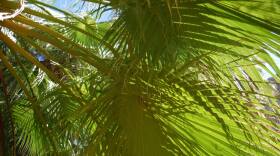The common poorwill is a bird of the Southwest deserts and northern and higher elevation woodlands in the West. Unlike many birds that migrate to sunnier spots in winter, this bird employs a unique way of avoiding the cold—by going into hibernation.
The poorwill’s dusky brown-gray color provides excellent camouflage on the rocky slopes and shrubby hillsides where it spends most of its time. When they poorwills do fly, it’s mostly at night on silent wings.
In cold weather when moths and beetles aren’t around, the birds will take refuge in a hollow log or under a rock. Their body temperature can drop as low as 40 degrees, and heartrate and breathing are nearly undetectable. They live on stored fat for weeks.
Ornithologist Edmund Jaeger and students made the first scientific discovery of a hibernating poorwill in a California canyon in the 1940s. Biologists know that other species such as hummingbirds can enter a slowed down state called torpor for a brief time. But the poorwill is still the only bird known to hibernate for longer periods.
The Hopi people recognize this uniqueness by naming it Ho'tsko, “the sleeping one.”
With the arrival of spring, and warmer days and more insects, poorwills awaken and begin breeding. The nest is little more than a scraped out spot in the soil to hold a pair of eggs. This is the time of year when their clear two-note whistle again fills the night, singing their name.
This Earth Note was written by Rose Houk and produced by KNAU and the Sustainable Communities Program at Northern Arizona University.








